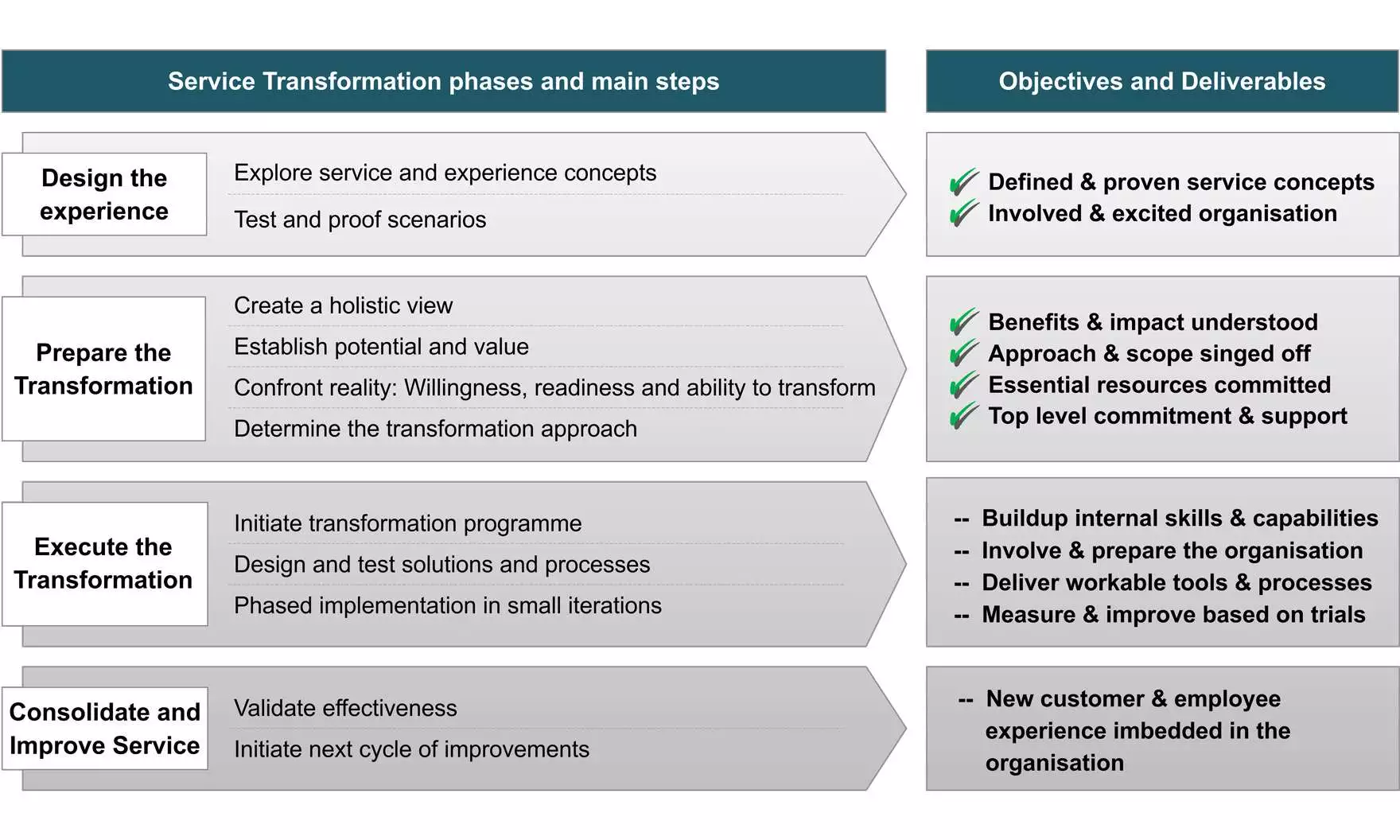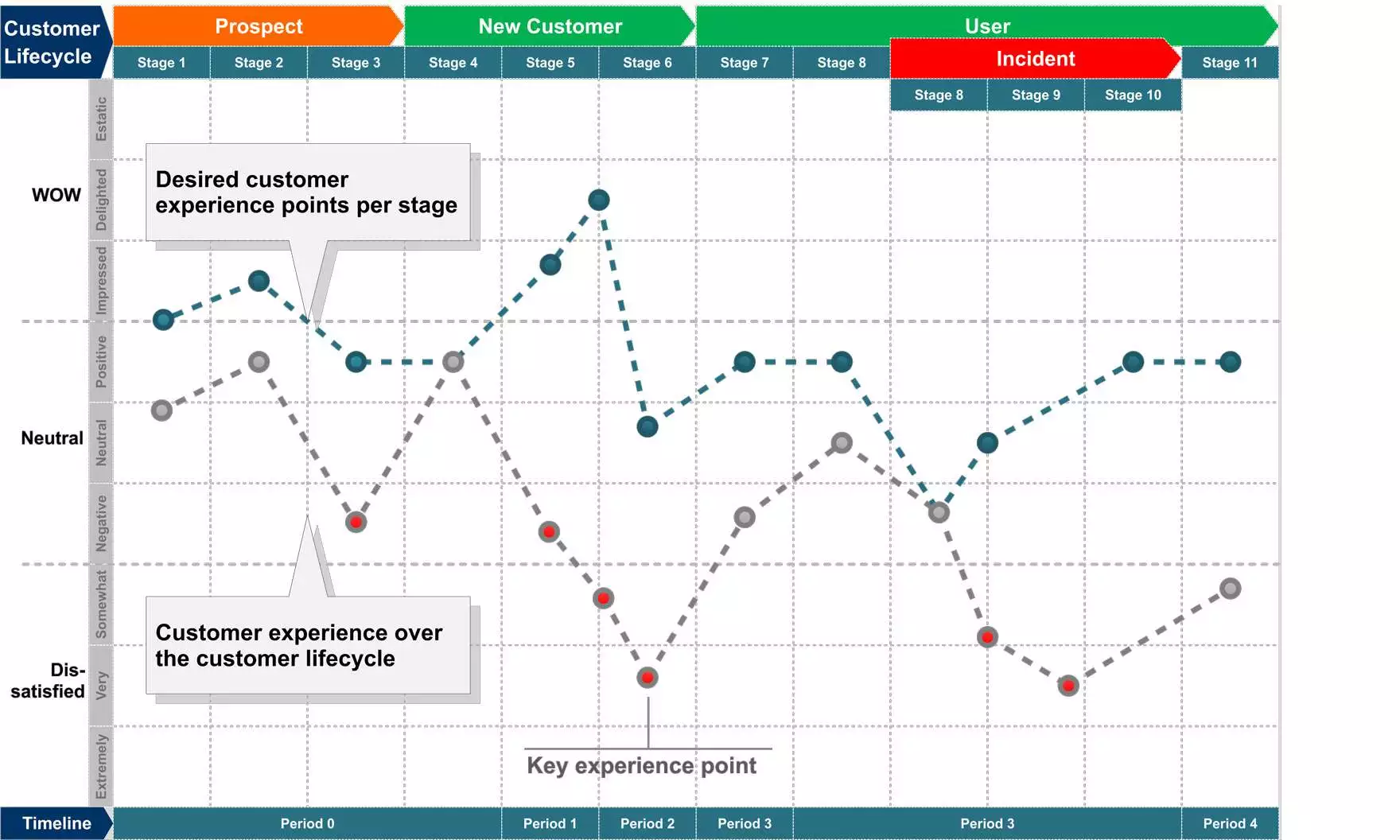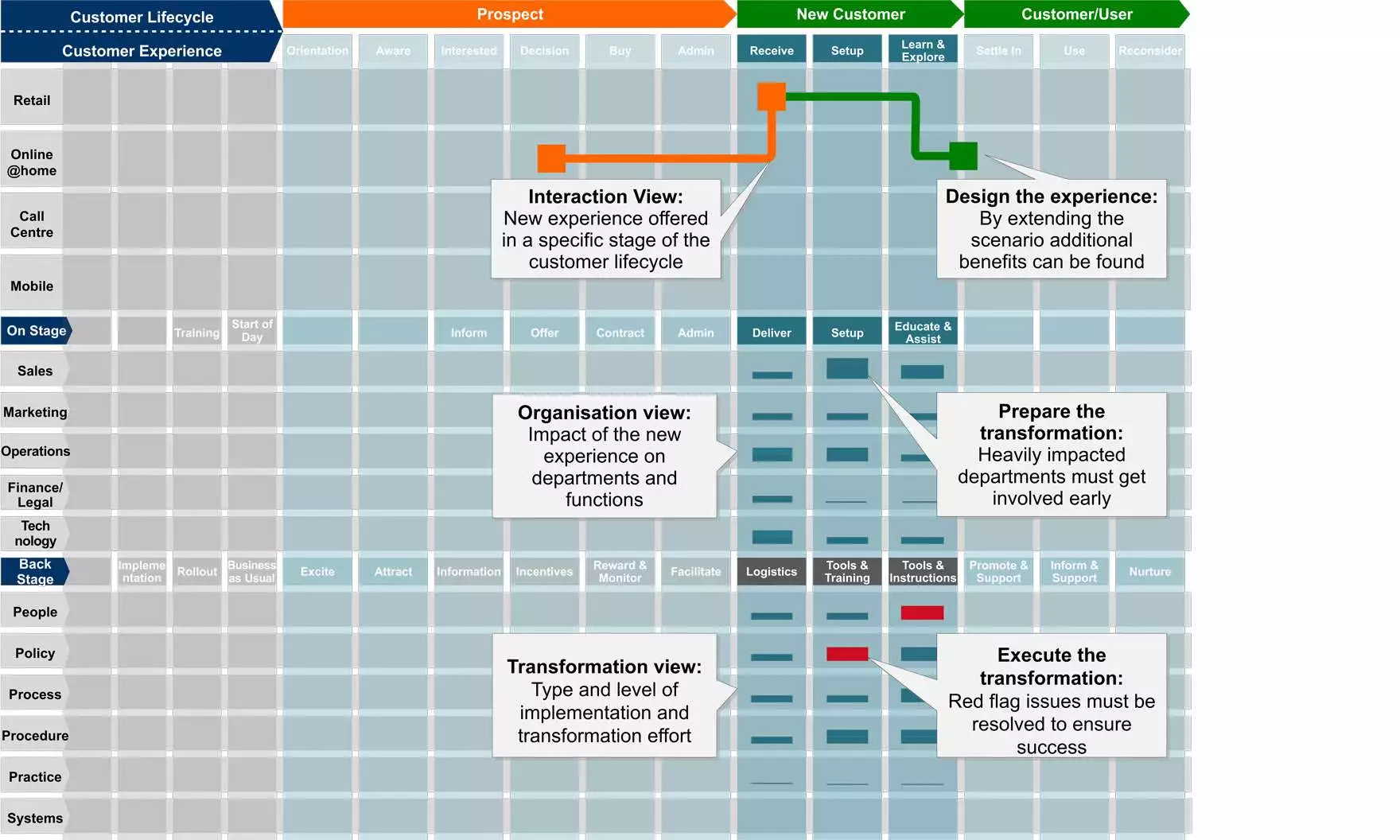Establishing the potential of a customer experience is not a linear process of calculating increased sales and/or reduced service time, but should be determined over the entire customer lifecycle to establish the overall value for the organisation. This frequently requires a different measurement model to capture the change in customer preferences and behaviour.
Case in point: a customer might like the convenience of picking up an online product at a retail outlet, but the value for the organisation lies in the opportunity to educate and upsell that customer. Looking at in-store pickup this way changes this stage from a cost element, to one that generates revenue and saving. Assessing potential and value of this scenario lays the foundation for a business case which determines its place and priority on the implementation roadmap.
Confront reality: willingness, readiness and ability to transform
In building the transformation map, a number of issues come up that need to be resolved in one or more of the following domains: people, policies, processes, procedures, practices and systems. Organisations enforce practices that frustrate customers and employees, but changing the underlying policies has major implications for processes, systems, and employees. The cost in monetary terms and required political capital has decision makers and stakeholders wary about implementing this sort of change for real. Adjustments to processes or systems can improve parts of the customer experience, but the unwillingness to address core issues puts the improvement of some of the experience points out of reach for these organisations.
The level of management commitment, resources allocated and strategic importance given, together determine the readiness of an organisation to pick up the challenge of a large transformation programme. It is important to match the scope of the transformation with the readiness of organisation and not just its ambition. With the large number of moving parts that create an experience for the customer, it is important to force clear decisions on scope and direction at the highest level before even building the multiyear plan.
Determine approach
Transformation should not be mistaken for reorganisation as most organisations have undergone the latter, but few have attempted the first. Taking the time to prepare the transformation and matching it with the organisations abilities and readiness leads to an approach that has higher chance of success in delivering and imbedding a new customer experience.




